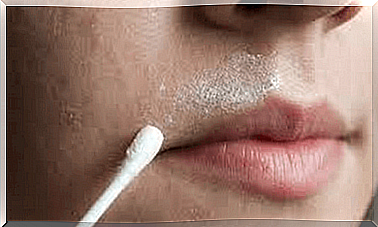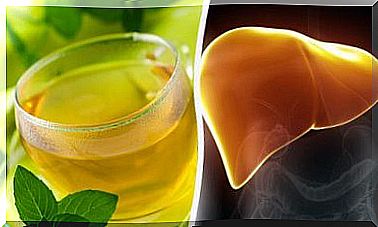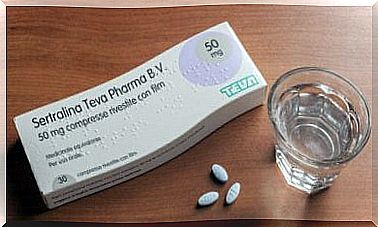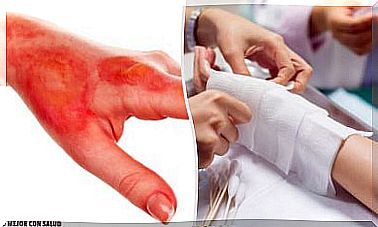Is Eating Roast Chicken Healthy?

Roasted chicken is a simple, quick and inexpensive preparation. You can buy it frozen, make it at home or order it at your favorite restaurant. This is a hearty and versatile dish. However, many may wonder if roast chicken is healthy.
For its preparation, the chicken is placed directly on the fire. It can be on a barbecue, in the shape of a skewer, or on a baking sheet in the oven. The cooking speed is highly dependent on the method used. Do you want to know more about its nutritional value and its disadvantages? Keep reading!
Nutrition Facts About Roasted Chicken
To define whether the recipe is healthy or not, some factors must be taken into account. Among them, the main one is how the chicken was seasoned. In addition, the chicken cut used is also relevant. The cut that provides the most protein is the breast, with 24 grams. The one that contributes the most calories is the thigh, which contains the most fat (12 grams) and vitamin B12.
The chest contains between 3 and 7 grams of fat, depending on the presence or absence of skin. In addition, it contributes 50% of the recommended daily intake of niacin, 9% of riboflavin and 35% of selenium. It also contains small amounts of other nutrients such as phosphorus and zinc.
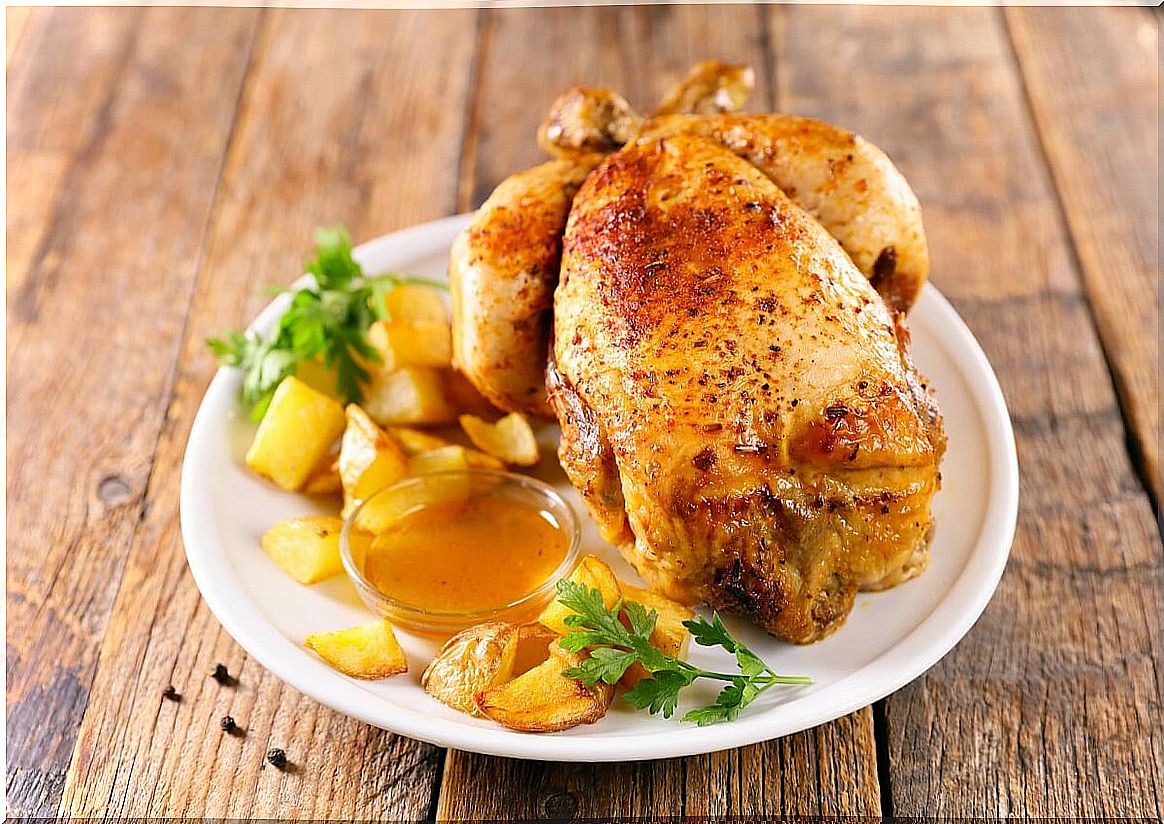
The Benefits of Roasted Chicken
The benefits of this preparation go beyond its versatility. Know its nutritional benefits.
1. Good source of protein
A person needs to consume an average of 0.8 grams of protein per kilogram of body weight. That is, if someone weighs 50 kilos, they should eat 40 grams of protein a day. In this regard, it is important to note that 100 grams of roasted chicken breast provide 24 grams of protein per day.
That is, if you combine it with other sources of this macronutrient throughout the day, you can get your daily allotment according to your need.
2. Serves to rebuild tissue
In fact, not just tissues, but cells, muscles, bones and organs. Cell regeneration refers to the natural process of repairing damaged cells. One example is scarring, hair and skin regeneration, and healing of broken bones.
Lack of protein slows down healing. Its low intake prolongs the inflammatory phase and prevents collagen synthesis, which is essential in this process.
3. Strengthens the immune system
Roast chicken contains 843 international units of vitamin A. This nutrient plays an important role in the immune system. Specifically, it maintains the normal function of macrophages, neutrophils and NK cells. The latter kill infected cells. Therefore, they help to fight infections.
Contraindications of Roasted Chicken
Consuming roasted chicken can be harmful to your health, mainly because of the way it can be seasoned. If you have a lot of sodium, its intake is harmful in the medium and long term. In this regard, the World Health Organization states that adults should not consume more than 5 grams of sodium per day.
Consuming too much salt can cause high blood pressure, heart attacks, strokes and kidney damage. Therefore, it is necessary to take care of the amount of salt that the roast chicken contains.
What should be taken into consideration when buying chicken?
When buying chicken roasted at a grocery store or frozen, there are a few things to consider:
chicken freshness
Check the chicken’s expiration date. If there is no date on the tray or packaging, ask when it was cut. If possible, make sure the skin is soft, supple and moist. It should have no traces of feathers or blemishes. Its color must be uniform and must not have unpleasant odors. Make sure the chicken has not been frozen and thawed.
correct cooking
You should also make sure it is cooked correctly. If it’s white, it’s fully cooked. If there’s any pink part, it’s underdone. Also see how the chicken is pulled from the bone. If there’s a raw texture and it makes a noise, it’s another sign that it’s undercooked.
Raw or undercooked chicken can be contaminated with bacteria such as Campylobacter and Salmonella. Eating it that way can lead to food poisoning.
amount of sodium
Look at the nutrition chart on the package to see how much sodium is in the chicken and what it’s been marinated with. If possible, remove the skin to reduce the amount of fat.
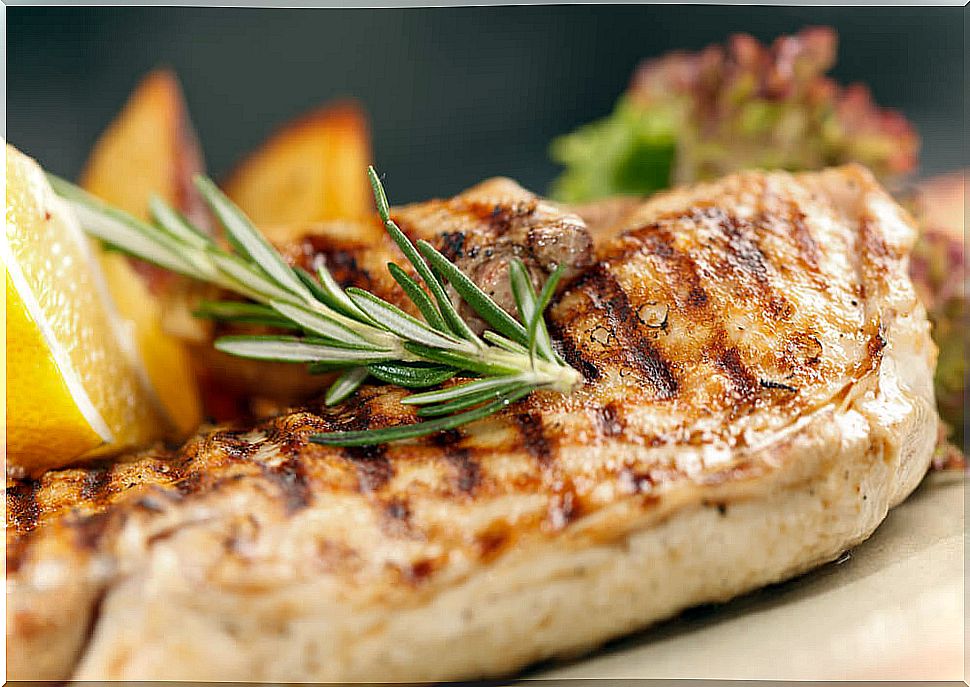
How to make oven-roasted chicken at home
You can try making an oven-roasted chicken at home. You will need a whole chicken, salt, pepper, thyme, butter and mustard.
Instructions
- Start by preheating the oven to 230 degrees Celsius. Wash the chicken and dry it to make it more crunchy on the outside. Add salt and pepper inside. Tie the legs together and arrange so that it cooks well inside.
- Spread salt and pepper all over the chicken. Then place on a baking sheet to bake for an hour. Remove from oven, add thyme, melted butter and mustard. Stir well and cover the chicken with the mixture. Let it sit for 15 minutes and it’s ready.
As you can see, this is not a difficult recipe. What you should consider is the amount of salt added and the amount of times you consume it. Besides, you can enjoy it without guilt, as roasted chicken is a healthy meal.
